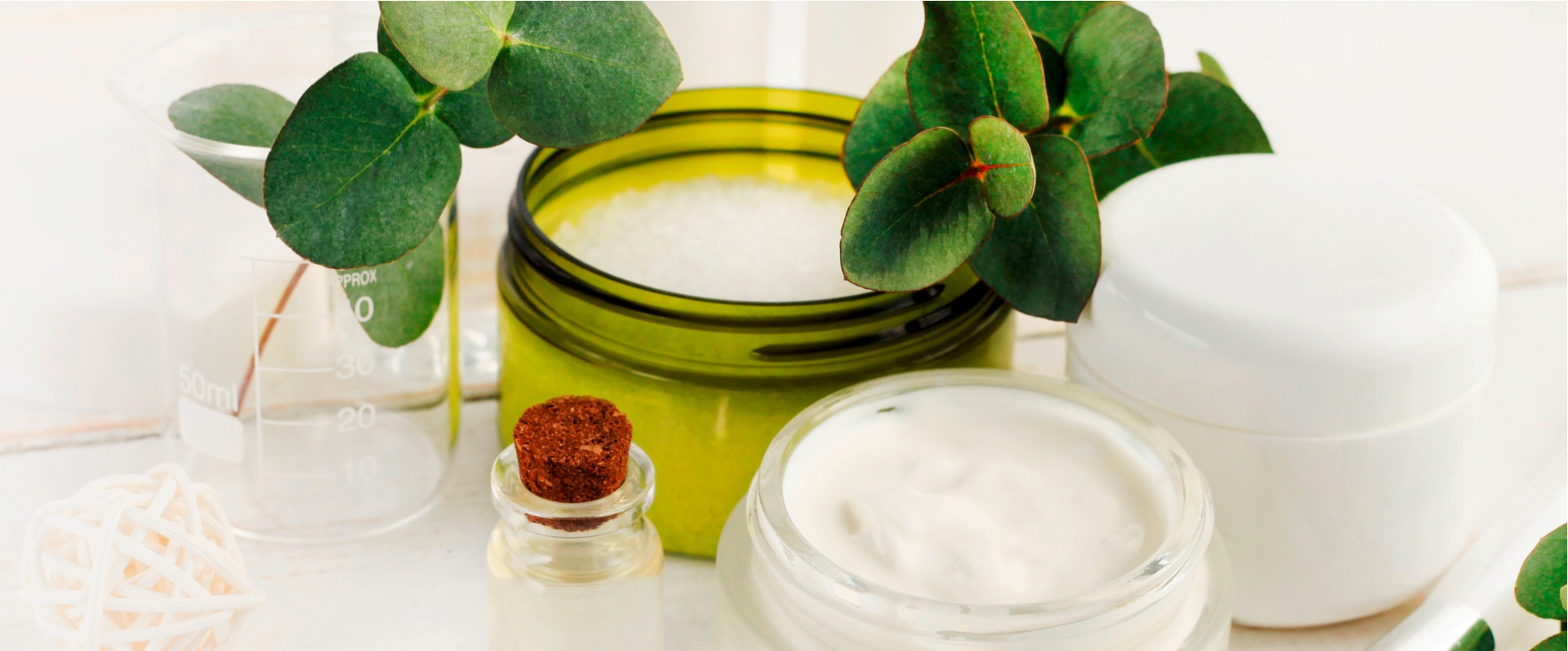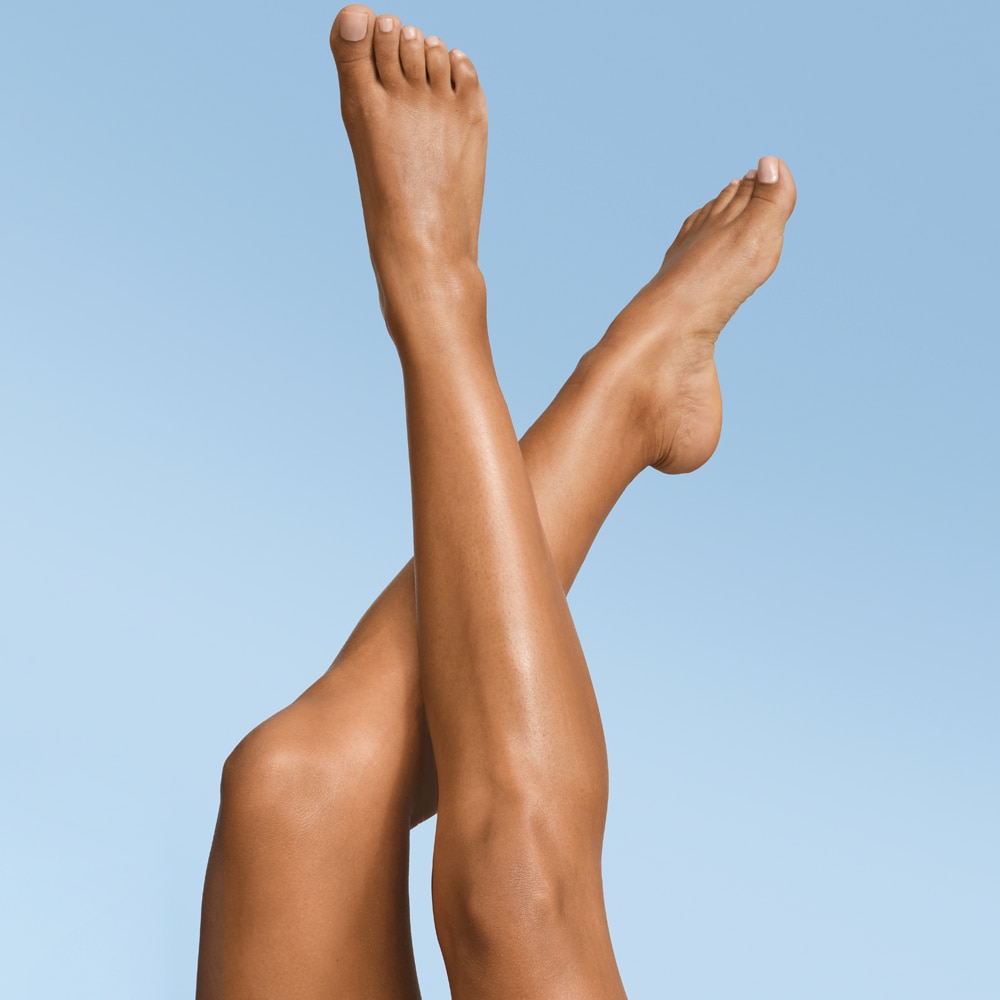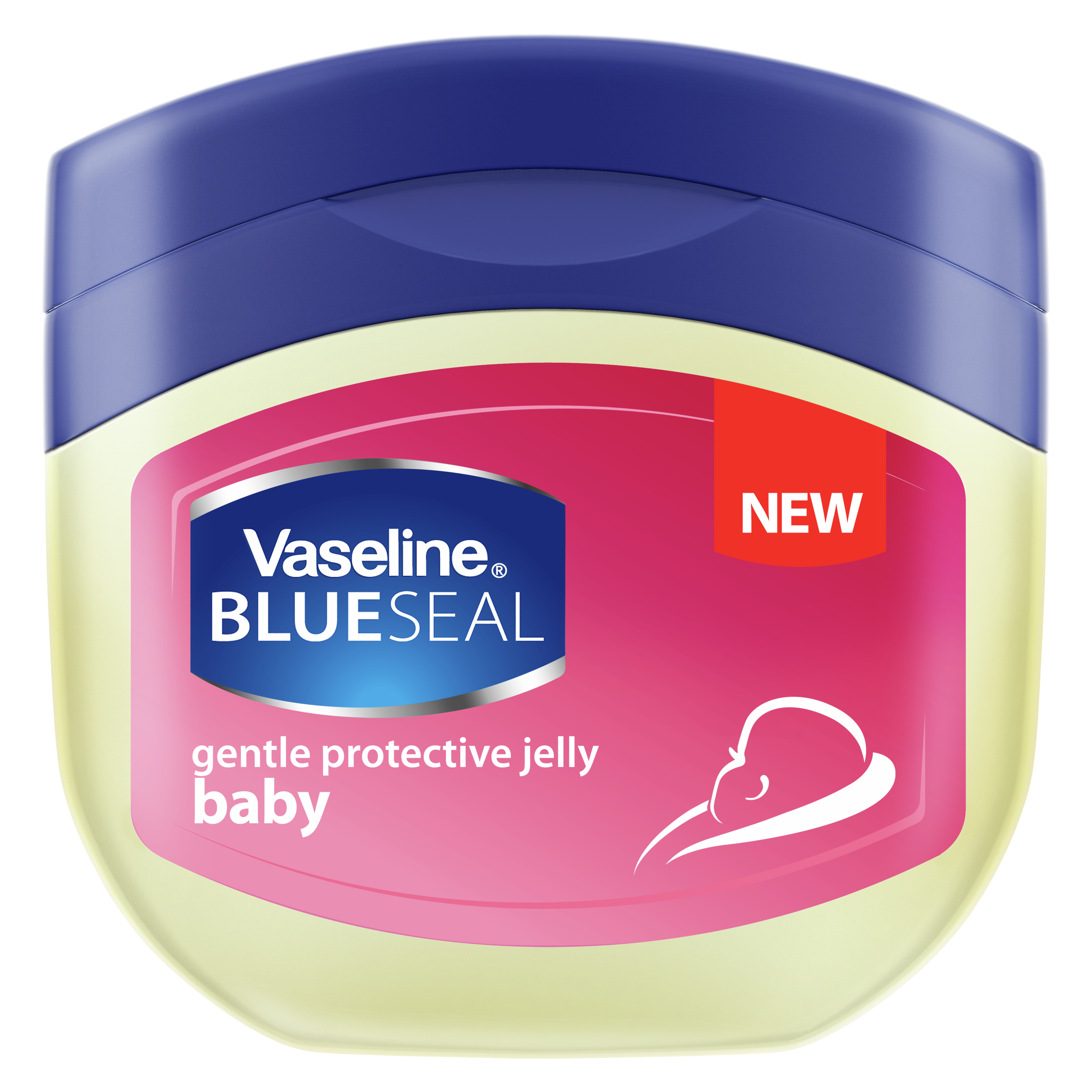Skip to content
Create and DIY your own Natural Skin Care Routine.
Thanks to the skin care benefits of natural oils and herbs, the cosmetics world is seeing a rise1 in all-natural and DIY skin care2. One of the biggest indicators of this trend is the growing do-it-yourself movement3, where enthusiasts are creating DIY face masks, moisturizers, and toners as at-home remedies for a number of skin problems.
Many people choose the DIY skin care route to better control exactly what goes on their skin-especially the flexibility to cut unnecessary fragrances and chemicals while targeting specific skin issues4.
Always consult a dermatologist before trying new skin care products. We’ve included some watch-outs and information below about how to avoid irritation or other skin complications when trying new DIY skin care ideas at home. Ahead, we break down popular ingredients users use in DIY skin care routines. While we haven’t tested these ourselves, we look forward to hearing what you think. Always be sure to discuss with your dermatologist and follow our suggestions for avoiding irritation.
- DIY Face Masks
Face masks are designed to penetrate into pores for deep cleaning, moisture, and exfoliation. And while there are myriad face masks available for purchase at your nearest beauty store, many enthusiasts are opting to make their own. Here’s a common approach to making DIY face mask at home:
1. Choose a base ingredient.
Many DIY face mask recipes call for one thick base that coats easily. Here are some common ones we’ve found:
a. Honey
Known to keep skin youthful and hydrated5.
b. Plain yogurt
Used to naturally smooth skin6.
c. Aloe vera
The gel inside the aloe vera plant has been known to hydrate skin, stimulate collagen production and even believed to combat acne7.
d. Vaseline® Jelly
Our triple-purified white petrolatum has been made for over 140 years and is a great emollient-a.k.a. softening. It’s also non-comedogenic, so it won’t clog pores. If you’re going this route, make the mask your very last step in your skin care routine.
2. Be careful when adding botanicals.
Many users report using honey, yogurt, aloe vera, and Vaseline® Jelly as a simple one ingredient DIY face mask, but some skin care bloggers also add botanicals, essential oils, and spices to their blends. Users suggest adding about a tablespoon of base for every few drops (or pinch) of add-on botanicals.
Common additions might include:
a. One or two drops of tea tree oil is believed to help prevent moderate acne8. Those with sensitive skin or eczema should be cautious when using this powerful botanical.
b. A pinch of cinnamon or turmeric. Adding either spice is believed to add gentle exfoliating properties as well as anti-acne benefits9, 10 to your mask.
3. Remember common sense - Always spot-check.
When making a DIY face mask, be wary of potential allergies or reactions and consult with your dermatologist about any known risks for your skin. Cinnamon may be too abrasive for sensitive skin, while lemon juice-or any other citrus juice-may cause sunburns when topically applied11 and exposed to sunlight.
If trying your own DIY face mask, be sure spot-check all ingredients on a small section of skin-such as your wrist or arm-to see if irritation develops. And always be careful to avoid the delicate eye area!
- DIY Skin Toner
A good DIY skin toner should be the last step of your cleansing routine. Toners are intended to remove any remaining dust or dirt while keeping your skin’s balance in check. Depending on the ingredients, toners can be hydrating, soothing, or even help keep oil at bay. Below are some ways users create their own and apply with a cotton ball or pad after using a face mask or as part of their daily skin care routine.
1. Here are some toning ingredients users report using.
These popular ingredients may work best alone after diluting them slightly with water, or some users mix and match them depending on how skin reacts. Always remember to spot check first.
a. Rose water
An all-natural DIY skin toner believed to be suited for sensitive skin, users report mixing rose water and purified water.
b. Witch hazel
Users report that witch hazel’s potent astringent properties can help balance eczema- and acne-prone skin.
c. Green tea
Green tea is known to have naturally occurring antioxidants which some believe to be potent anti-aging properties.
d. Apple cider vinegar
Users report that Oily or acne-prone skin may benefit from acidic apple cider vinegar12. If you are considering trying, we recommend diluting with water before applying to skin to help avoid irritation.
2. Add a nourishing oil.
Beauty pros will often add one or two drops of essential oils known for their fragrance or anti-acne properties. We would recommend diluting all of the following to avoid irritating skin:
a. Tea tree oil
Users suggest one or two drops to calm acne-prone skin.
b. Essential oils (for fragrance)
Avoid thyme, clove, cinnamon bark, or oregano oils-these can irritate skin. Be careful with citrus oils too, as they may cause burns.
3. Concoct and spot check.
Mix your ingredients together in a spray bottle before applying to a small section of your arm to test for any unpleasant reactions. This step is important; DIY skin toners can include somewhat abrasive liquids.
Always remember to follow with a moisturizer. Choose one that’s non-comedogenic, like Vaseline® Jelly, to avoid clogging your newly refreshed pores!
- DIY Face Moisturizer
Typically, moisturizers have three purposes: to hydrate skin, to smooth skin, and to seal in moisture. While many associate the word “moisturizer” with the face, your body’s skin needs just as much hydration to stay healthy. Here are some DIY skin moisturizers people make at home:
1. Choose a base.
All moisturizers consist of ingredients that either form a barrier on skin to seal in moisture (occlusive), boost skin’s natural moisture (humectants), or soften the skin (emollients). All work to keep skin smoother and more hydrated. Users report using the base moisturizing ingredients below alone or mixed together while slightly warm for a fluffy, whipped DIY body lotion.
a. Argan oil
This lightweight oil is believed to be packed with skin-beneficial Vitamins A and E12.
b. Coconut oil
Coconut oil is believed to penetrate skin better than most oils14, so it’s believed to quickly and effectively moisturize dry, flaky skin types.
c. Vaseline® Jelly
Triple-purified white petrolatum is a good solution for very dry, itchy skin. Plus, it’s non-comedogenic (not pore-blocking).
d. Shea butter
Shea butter is a moisturizing agent known to alleviate dry skin problems.
e. Cocoa butter
Known to improve skin elasticity15. Try Vaseline® Cocoa Radiant Lotion for both the richness inspired by cocoa butter and made with Vaseline® Jelly.
If you have sensitive or acne-prone skin, be extra-diligent when researching whether your DIY moisturizer base is comedogenic, as it may worsen blackheads and acne. Certain all-natural ingredients like coconut oil or olive oil are considered comedogenic (pore-blocking)16, and might not be appropriate for many types of skin, including sensitive skin. For more sensitive areas, opt for moisturizing agents that are non-comedogenic, like Vaseline® Jelly.
2. Add on essential oils and botanicals.
We’ve noticed many DIY skin care sites recommending the addition of hydrators and essential oils to their at-home recipes. Hydrators help draw moisture into your skin, while essential oils are believed to add anti-aging benefits.
Many lotions already have hydrators and occlusive agents for skin moisturization, so try including a drop or two of essential oils for improved fragrance. For extra hydration, consider adding these ingredients:
a. Glycerin is a gentle hydrator that binds water to your skin. This hydrator is a main component of the Vaseline® Intensive Care Advanced Repair Unscented Lotion, and is our best option for sensitive, dry skin.
b. Aloe vera gel is known to have hydrating properties. Try mixing a small portion into your base moisturizer while cool. For an effective moisturizer, try Vaseline® Intensive Care Aloe Soothe Lotion, which is made with aloe and microdroplets of Vaseline® Jelly.
Many DIY recipes call for one or two drops of oils to provide additional skin care and sensory benefits. Here are a few popular additions users report using.
a. Lavender oil
Commonly used to provide aromatherapy benefits17.
b. Rose oil
Add a rosy scent to your lotion18.
c. Tea tree oil
Use for particularly oily areas.
Users caution that these are particularly strong botanicals and should be used sparingly, and mixtures should always be spot-checked on a small section of your skin before general use.
Expert Advice
The advice in this article does not constitute medical advice, it is solely available for information purposes. Always consult a doctor before beginning any new skin care regimen.
- James Russo, SVP, Global Consumer Insights, @JRussoNielsen. “Package This: Beauty Consumers Favor 'Cruelty Free' and 'Natural' Product Claims.” What People Watch, Listen To and Buy.
- Group, The NPD. “Category and Generational Shifts Are Altering the Prestige Beauty Landscape, NPD Reports.” NPD Group, The NPD Group, 15 Mar. 2016, Generational shifts altering the beauty landscape
- “Google Unmasks the Skin Care Trends of 2017.” Think with Google.
- Center for Food Safety and Applied Nutrition. “Ingredients - Fragrances in Cosmetics.” U S Food and Drug Administration Home Page, Center for Food Safety and Applied Nutrition, www.fda.gov/cosmetics/productsingredients/ingredients/ucm388821.htm.
- Burlando, B, and L Cornara. “Honey in Dermatology and Skin Care: a Review.” Journal of Cosmetic Dermatology., U.S. National Library of Medicine, Dec. 2013, www.ncbi.nlm.nih.gov/pubmed/24305429.
- Smith, W P. “Epidermal and Dermal Effects of Topical Lactic Acid.” Journal of the American Academy of Dermatology., U.S. National Library of Medicine, Sept. 1996, www.ncbi.nlm.nih.gov/pubmed/8784274.
- Surjushe, Amar, et al. “ALOE VERA: A SHORT REVIEW.” Indian Journal of Dermatology, Medknow Publications, 2008, www.ncbi.nlm.nih.gov/pmc/articles/PMC2763764/.
- O'Connor, Anahad. “Remedies: Tea Tree Oil for Acne.” The New York Times, The New York Times, 27 Jan. 2011, well.blogs.nytimes.com/2011/01/27/remedies-tea-tree-oil-for-acne/.
- “Turmeric.” National Center for Complementary and Integrative Health, U.S. Department of Health and Human Services, 16 Dec. 2016, nccih.nih.gov/health/turmeric/ataglance.htm.
- Zu, Y, et al. “Activities of Ten Essential Oils towards Propionibacterium Acnes and PC-3, A-549 and MCF-7 Cancer Cells.” Molecules (Basel, Switzerland)., U.S. National Library of Medicine, 30 Apr. 2010, www.ncbi.nlm.nih.gov/pubmed/20657472.
- O'Connor, Anahad. “Remedies: Tea Tree Oil for Acne.” The New York Times, The New York Times, 27 Jan. 2011, well.blogs.nytimes.com/2011/01/27/remedies-tea-tree-oil-for-acne/?_r=0.
- Dolak, Lindsay. “How One Bottle of Apple Cider Vinegar Will Totally Transform Your Skin & Hair.” InStyle.com, InStyle.com, 23 Mar. 2016, Get More Information.
- Tichota, Deise Michele, et al. “Design, Characterization, and Clinical Evaluation of Argan Oil Nanostructured Lipid Carriers to Improve Skin Hydration.” International Journal of Nanomedicine, Dove Medical Press, 2014, www.ncbi.nlm.nih.gov/pmc/articles/PMC4137996/figure/f5-ijn-9-3855/.
- O'Connor, Siobhan. “10 Amazing Beauty Tricks With Coconut Oil.” Prevention, Prevention, 17 Jan. 2017, www.prevention.com/beauty/coconut-oil-cures-for-your-skin-and-hair.
- Scapagnini, Giovanni, et al. “Cocoa Bioactive Compounds: Significance and Potential for the Maintenance of Skin Health.” Nutrients, MDPI, Aug. 2014, www.ncbi.nlm.nih.gov/pmc/articles/PMC4145303/.
- Andersen, Charlotte Hilton. “The Worst Skin Care Advice Dermatologists Hear.” Reader's Digest, www.rd.com/health/beauty/dermatologist-skin-care-advice/.
- Koulivand, Peir Hossein, et al. “Lavender and the Nervous System.” Evidence-Based Complementary and Alternative Medicine : ECAM, Hindawi Publishing Corporation, 2013, www.ncbi.nlm.nih.gov/pmc/articles/PMC3612440/.
- Boskabady, Mohammad Hossein, et al. “Pharmacological Effects of Rosa Damascena.”Iranian Journal of Basic Medical Sciences, Mashhad University of Medical Sciences, 2011, www.ncbi.nlm.nih.gov/pmc/articles/PMC3586833/.
RELATED PRODUCTS
- slide 1
- slide 2
- slide 3
- slide 4
- slide 5
- slide 6












